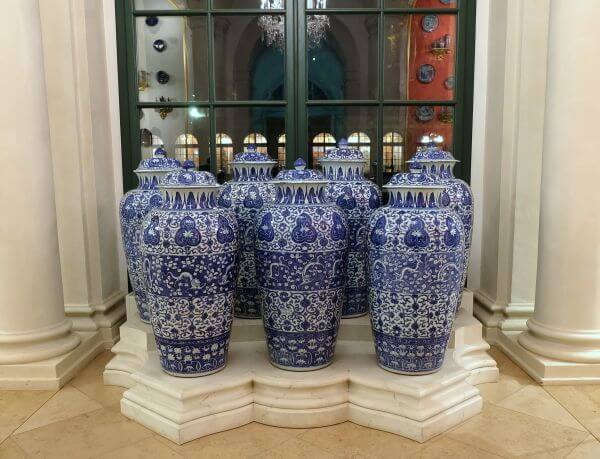Feng Schöneweiß // Provenance and Monumentality: Chinese Porcelain, German Curators, and Global Art History in Dresden since 1700
This book project explores a history of provenance research as global art history. It examines the correlation between provenance and monumentality in the making of transcultural heritage within local cultural memory, elaborating the entangled biographies of a rare collection of Chinese monumental vases (chinesische Monumentalvasen) and four generations of Dresden museum professionals. On 31 March 1982, Stasi agents and DDR tax officials confiscated the collection of Dresden citizen Helmuth Meißner (1903–1998). Among the confiscated artworks was a colossal blue-and-white porcelain vase made in Jingdezhen, China, in ca. 1690. Craving for foreign currency, the Stasi intended to sell the whole collection abroad via its hidden networks. Learning of the confiscation and planned sale, museum professionals at Dresden State Art Collections (SKD) cooperated with Saxon cultural officials to register the vase as cultural property of national significance (national wertvolles Kulturgut), the highest category of cultural heritage according to the Cultural Property Protection Act (KGSG). Such a legal status recognized the vase as “particularly significant for the cultural heritage of Germany [...] and [is] thus formative for Germany’s cultural identity” (§ 7 KGSG). The Stasi was hence prohibited from removing the vase from DDR territory, and subsequently submitted the vase to Dresden Porcelain Collection, SKD.
Why did Dresden museum professionals choose to take legal measures to battle against the horrific Stasi over the possession of a vase? How could they make a case for the Chinese vase being formative for the cultural identity of Germany? Indeed, legal measures were effective in acquiring the colossal vase for the museum. Beyond a strategic move, however, what actually motivated the museum professionals was the status of the vases in local cultural memory. The book argues that continuous provenance research shaped the monumentality of transcultural objects via the interactions between museum staff and prominent exhibits, embedding unintentional heritage in the history, identity, and space of the museum and the city.
The objects in focus are the so-called Dragoon Vases (Dragonervasen) acquired by Augustus the Strong (1670–1733) via exchanging Saxon dragoon soldiers for Prussian collection of Chinese porcelain in 1717. Measuring more than one meter and weighing ca. 50 kilograms, they were the largest porcelain worldwide until the mid-eighteenth century, and became the collection’s Hauptruhm (Zimmermann 1905) in the nineteenth century. The historical figures in the spotlight are Gustav F. Klemm (1802–1867), Johann G. T. Graesse (1814–1885), Ernst Zimmermann (1866–1940), and Fritz Fichtner (1890–1969). Substantiated with a rich array of archives, inventories, and manuscripts, the book also features visual and material evidence preserved in Dresden, Berlin, and China, and recent scholarship in digital humanities.
As the book will show, provenance research played the pivotal role in fostering the monumentality of Dragoon Vases and transforming them into German cultural heritage on social, cultural, and intellectual levels. From the translocation of objects to the emergence of disciplinary knowledge, the book unfolds the longue-durée transculturation of Chinese art in German cultural history, revealing dynamics between global objects, the culture of memory, and the agency of museum professionals. The book proceeds thematically in five chapters on materiality and periodization, inventories and provenance, making curatorial decisions, writing global art history in the museum, and transcultural memory. In doing so, the book brings to analytical attention the historiography of provenance and the conceptual framework of transcultural monumentality for provenance research, history of collecting and collections, and global art history.

[Caption: Seven of the so-called Dragoon Vases (Dragonervasen). Jingdezhen, China, ca. 1690. Porcelain painted in underglaze cobalt blue. H. 101.1–104.7 cm, D. 47.7–49.3 cm. Porzellansammlung, Staatliche Kunstsammlungen Dresden. Photograph: Feng Schöneweiß.]
